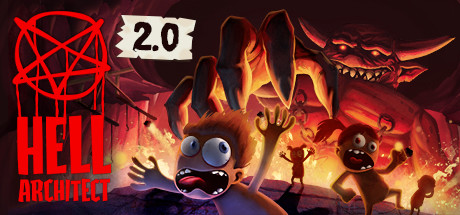I wanted to like Beacon. I really did. But overall right now, given that the game isn’t even finished, I can’t recommend it. So what is Beacon, why might you want to play it, and why should you avoid it?
Beacon is a top down real time isometric roguelike. It’s interesting if nothing else for actually not being 2D, despite the fact that the player doesn’t have a jump, and the whole game takes place in 3D environments. Interesting isn’t the same as good though, so we’ll come back to that later.
So why shouldn’t you play Beacon? Well, for starters, the game isn’t actually finished. Currently you can play through about six stages, and then the game just kills you at the end, because there isn’t anything else there. Secondly, it seems somewhat unstable. It took me less than 10 runs to get to the end of the current final area in the game. The only reason it isn’t a lower number is because the game crashed on a very good run early on, and forced me to restart.
Let’s say you don’t care about these reasons. Well, Beacon does very little that’s actually new. The game plays like a Frankenstein of mechanics. Each run starts by selecting the DNA you’re going to use for the run. This includes things health, stamina (yes, they’re two different things), armor, crit, luck, and I stopped caring because there are too many of them. This is followed by the DNA being sequenced, at which point any DNA mods you got are applied, and DNA has a chance to mutate, which permanently changes functionality of your character during the run. You arm might split open and replace your melee attack with a sonic projectile. You might get the ability to…. lifesteal while set on fire. Or maybe your legs just become pus-filled blobs that leave a trail of slime whenever you dash. It doesn’t really matter though, because:
1. Most of these end up playing the same, and
2. You’ll get multiple runs with those pieces of DNA, after which they die, and you can’t use them anymore.
I couldn’t see a pattern in which specific mutations actually occur, so I couldn’t, for example, use DNA to build a fire-based build, or anything. Also, some mutations are just boring. I had one that just massively decreased crit, on DNA that I had picked to increase crit.
Cool. So, since that’s done, let’s actually play. Each level is randomly generated, but ends up following a pretty similar pattern. Throughout your run, you’ll pick up DNA to use for future runs, guns, side equipment, sidearms and grenades.
Taking a step back for a minute, weapons are one of the few things that feel like they’re done correctly. Many of them are quite interesting (bone boomerang gun) and extra weapons can be recycled for ammo mods, which give a permanent boost for the rest of the run to your remaining weapons.
Grenades are worthless. I don’t know why they’re in the game, and I don’t know why you’d use them. They’re boring, pointless, and hard to aim.
Okay, now let’s talk about pickups and auxiliary. I don’t know which one is which, and I do not care. All you need to know is that the game lets you have one of each, and the grouping of items in these slots makes no sense.
For example: an item that gives you a chance to fully reload your magazines on kill, as a passive. Or a 5-use boost jump. An item that caps your health at 75, but gives you permanent health regeneration. Or a 10-use of a set of daggers that lifesteal if you hit with them.
There is literally no reason to ever pick up the consumables instead of the passive boost ones, the passive are just that much better. Also, unlike guns, these can’t be recycled for ammo mods. You can destroy them to get a single extra grenade. Hooooorayyy.
This brings me to my biggest gripe with the game overall: the art.
Beacon has beautiful art, but it’s almost entirely counter productive to the actual gameplay, i.e. being a fast-paced run and gun roguelike. The readability of the screen is garbage. Everything is done in a sort of low poly style, but instead of making it easier to tell whats going on, it’s messed up with tons of unnecessary detail, lighting, and other graphical crap. My favorite example of this would be the fact that slime and acid look almost exactly the same, but one is simply an armor reducing debuff, and the other is a DOT that can kill you.
Oh, and speaking of death, the game has insta-deaths. Falling off a ledge won’t kill you, but if you make the unfortunate error of somehow ending up on top of a bunch of spikes, that’s it. Run over.
There are good moments in Beacon: the dodging can feel nice, the weapons are cool. But the game feels like a bloated Frankenstein monster. It tries to do too much all at once, and ends up a playing like someone tried to make an ice-cream shake by going to a variety of fast food joints, ordering a small milkshake at each, then taking them home, shoving them into a blender, straw, cup, lid and all, and then just lighting the thing up. Drinking this shake means that sometimes you’ll get strawberries and chocolate, and sometimes you’ll get strawberries and small shards of plastic.
Also, the game is cakewalk fucking easy. You’ll spend more time being annoyed at trying to figure out where you need to go than you will in interesting fights.
I feel bad about tearing things to shit.



